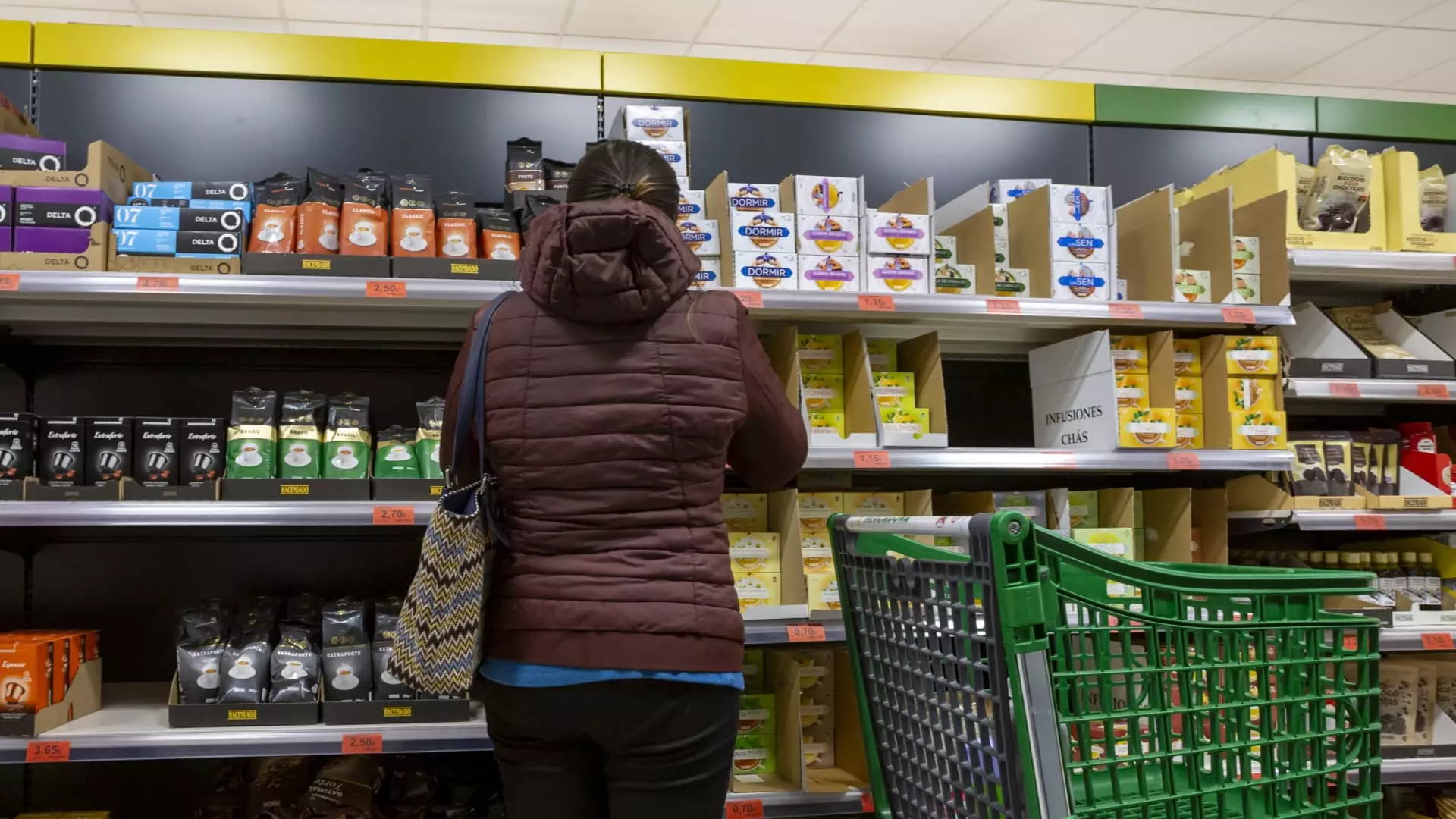The euro zone has recently faced significant inflationary pressures, with January’s report revealing a year-on-year inflation rate of 2.5%. This figure exceeded economists’ expectations, which had forecasted a steady rate of 2.4%, unchanged from the previous month. The data, released by the European statistics agency Eurostat, underscores the volatility tied closely to the energy market, highlighting the crucial role energy costs play in shaping inflationary trends.
Upon analyzing the components of inflation, a clearer picture emerges. Core inflation—an essential measure that excludes food, energy, alcohol, and tobacco—remained steady at 2.7%. This stagnation since September suggests a potential underlying issue in demand or spending that might be hindering broader economic recovery. Meanwhile, services inflation decreased slightly from 4% in December to 3.9% in January, reflecting marginal easing but not enough to suggest a significant shift in the trend.
Conversely, energy prices surged by 1.8% on a year-over-year basis, which represents a stark rise compared to the mere 0.1% increase reported in December. This drastic contrast exemplifies the factors contributing to inflationary pressures in the euro zone, suggesting a precarious balance between energy costs and overall economic stability.
The heightened inflation data poses critical considerations for the European Central Bank (ECB). While the bank recently adjusted the key deposit facility rate down to 2.75%—a reduction of 25 basis points—investors and analysts are questioning the potential for further cuts given the current inflation trajectory. Jack Allen-Reynolds from Capital Economics notes that the ECB is likely to remain cautious, particularly since high services inflation might prompt a slow approach to future policy adjustments.
The ECB’s commitment to its target inflation rate of 2% remains, but the outlook is complicated by recent inflation figures. Despite the challenges, the bank’s latest assessment indicates that disinflation is still regarded as being on track, although the timeline for a return to targeted rates may elongate, particularly with core inflation remaining static.
Beyond domestic factors, external influences—such as potential tariffs on goods imported from the EU to the United States—complicate the economic landscape further. While analysts like Bert Colijn from ING express caution about potential retaliatory tariffs exacerbating inflation, the overall impact could vary. Such tariffs have historically led to increased consumer prices, potentially rekindling inflationary pressures that had previously been tempered.
The broader economic environment in the euro zone, alongside rising consumer prices seen in key economies like France (1.8%) and Germany (2.8%), raises concerns about how these factors will interplay in the coming months. The uncertainty surrounding inflation and trade policies creates a precarious situation for the ECB in navigating monetary policy.
As the ECB contemplates its next moves, several predictions emerge. Analysts suggest that inflation may approach the 2% target by summer, with possibilities of even lower rates by the year’s end—if current trends hold true and inflationary pressures ease. However, the evolving economic conditions necessitate that policymakers remain vigilant and adapt strategies based on forthcoming data.
Ultimately, the current inflation scenario in the euro zone serves as a reminder of the delicate interplay between economic conditions, energy prices, and monetary policy. As the ECB positions itself for a challenging year ahead, stakeholders will be closely monitoring developments to decipher how best to respond to the continuously shifting economic landscape. The balance between fostering economic growth and managing inflation will remain a critical focus, shaping the financial future of the euro zone.

